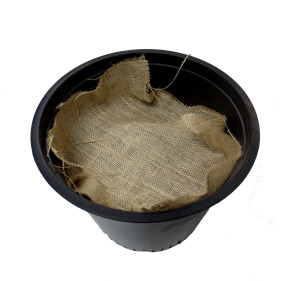We have 2 completely different (actually 3) environments build into one with each their own rules.
As a rule of the thumb, pH is the most important.
Fish and bacteria like a little alkaline – a little above 7. Plants like it acidic, about 5.5-6. So you need to combine these 3 in an efficient manner.
A happy space is around 6.4-6.6 if you want to focus a bit more towards the plants.
If you go outside this range, your plants might get the nutrients they need, but can’t absorb them due to too high pH. Or if you go too low, your bacteria (your biofilter) can’t efficiently convert your nitrates.
So pH too low and you kill off your biofilter, your pH too high and your plants can’t absorb the nutrients.
(Electric conductivity ~7, temperature about 19 for most fish).
Proper nutrient profiles
(aka planting tomatoes, cucumbers or peppers)
Lettuce is a very basic plant, it’s basically water and nitrogen. That’s why leaf vegetables go so good with aquaponics because they’re a match made in heaven.
But tomatoes, cucumbers and peppers need a different nutrient profile in different times of their growth cycle. Tomatoes like a lots of nitrogens while vegetating (putting out the vines). But when they’re flowering and fruiting, they want the nitrogen turned down and potassium (140~150 ppm for tomatoes) and phosphorus turned up.
In aquaponics it’s mostly nitrogens. But if you add the potassium and phosphorus into your system, it will make the lettuces flower as well, which will give you a bitter, inedible lettuce.
So if you want to grow tomatoes more efficiently, you can go for a dual root zone.
Dual root zone
Create a separate area in the top of the root zone where you can boost growth by adding fertilizer (organic, of course!) to the top roots of the plant in a way that doesn’t drain into the water for the aquaponic system and affect the fish. Here is how it works:
1) First, find a round plastic pot that is about 12” deep, and make sure that it has plenty of holes in the bottom for drainage.
2) Then fill that pot 2/3 way with the media from your aquaponic grow bed.
3) Top with a layer of fabric that will allow the plant’s roots to grow through, but will prevent the soil that you are about to add to the top of the pot from working its way down into the grow media layer. We used burlap.
4) Now, fill the rest of the pot with an excellent potting soil. We used a mixture of potting soil, worm castings, and coconut fiber (coir).
5) Figure out how much liquid the soil layer can absorb before draining into the grow media below. Cut that amount by 30%, and write it down. This is the amount of fertilizer solution you can safely add while simultaneously keeping your fish safe.
6) Plant your plant in the soil mixture.
7) Sink the planted pot into your grow bed so that the media in the pot is entirely submerged into the media in the grow bed.
8) Water the plant every few days with the amount of liquid you recorded in step 5 above so that the soil layer stays moist. We used water from the fish tank, and added Pure Blend Grow formula once a week until we saw flowers, then switched to Pure Blend Bloom.
Links:
– https://www.youtube.com/watch?v=sPkp78Kxbw8
– https://www.theaquaponicsource.com/dual-root-zone/
– https://www.globalnetacademy.edu.au/grow-better-root-vegetables-by-adding-phosphorus-to-your-soil/
